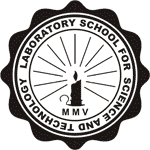
Laboratory School for Science and Technology
Innovative, accelerated education in science and technology
 |
Laboratory School for Science and Technology |
|
Mission of LSST To promote excellent scientific inquiry in the areas of STEM—science, technology, engineering, and mathematics—by preparing a diverse K to 12 student population to meet the demands of and contribute to the scientific and technological innovation of the 21st century, to transition students for honors and advanced placement STEM classes at the high school level. About the LSST Physical LSST is committed to preparing students to succeed and exceed in high school physics—the foundation for all natural sciences. Therefore, LSST students are expected to enroll in the five courses sequentially. These five courses are offered at two levels: 4th/5th grade and middle school (6th/7th/8th grade). At the middle school level, students will take the same courses but with increased depth and complexity. About the Instructor Ron Hurlbut is the mathematics faculty and curriculum developer for mathematics, technology, and engineering at Illinois Math and Science Academy (IMSA). Prior to IMSA, Learning at LSST LSST classes are small (9 students per class) in order to achieve maximum impact on students’ learning and performance. Integrative Classroom Environment and Learning Sequence-based Learning Our sequenced-based learning approach provides students with the fundamental building blocks for physical science which is the foundation for all natural sciences. Accelerated Learning Students work in teams and are engaged to think and work rigorously like scientists, promoting critical thinking, problem solving skills, and real world application which are necessary for building conceptual connections within and across the disciplines of math and science. Current technology is integrated into the learning environment to facilitate higher learning and advance solving capabilities. |
||
Laboratory school for science and technology |